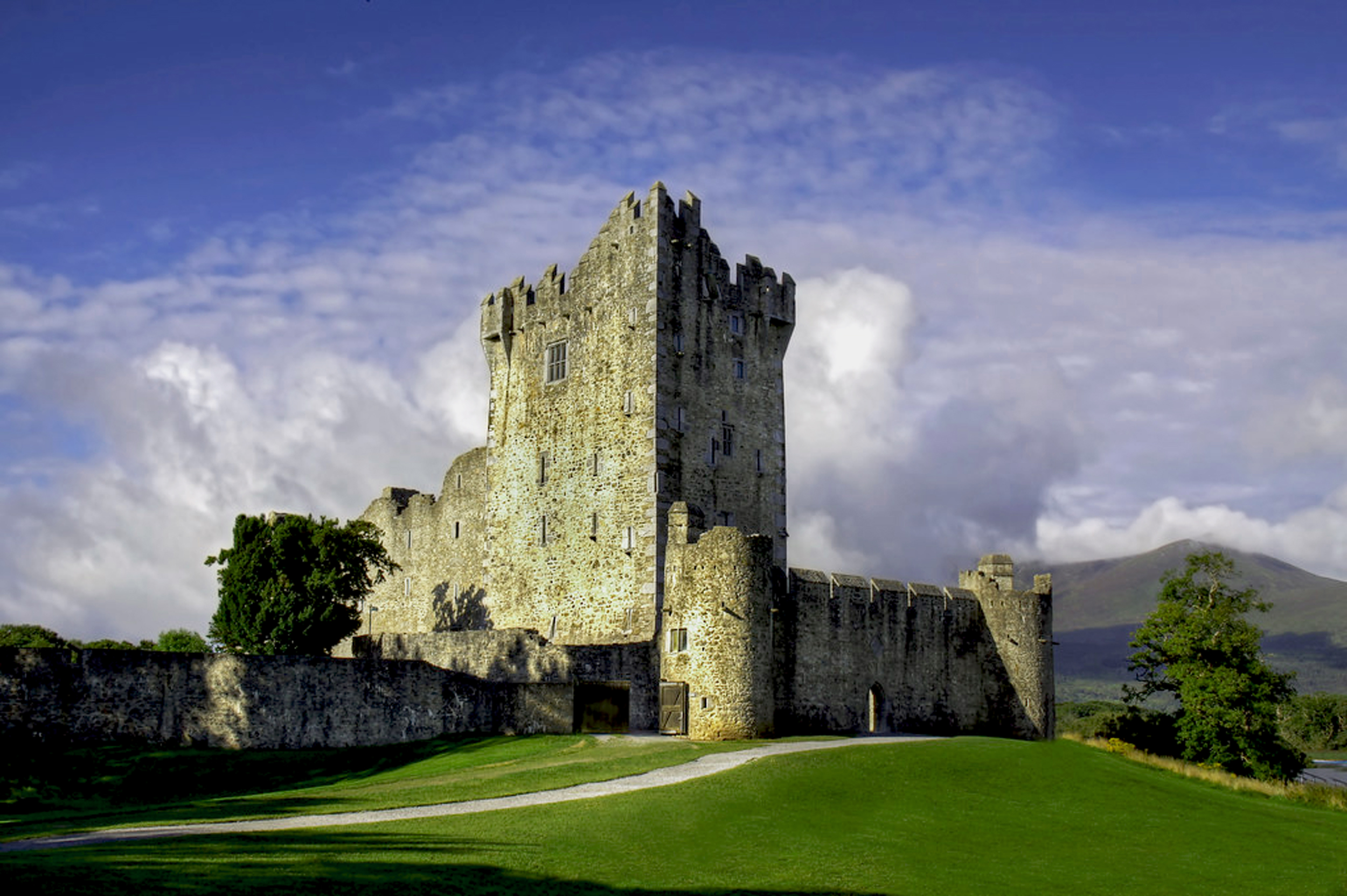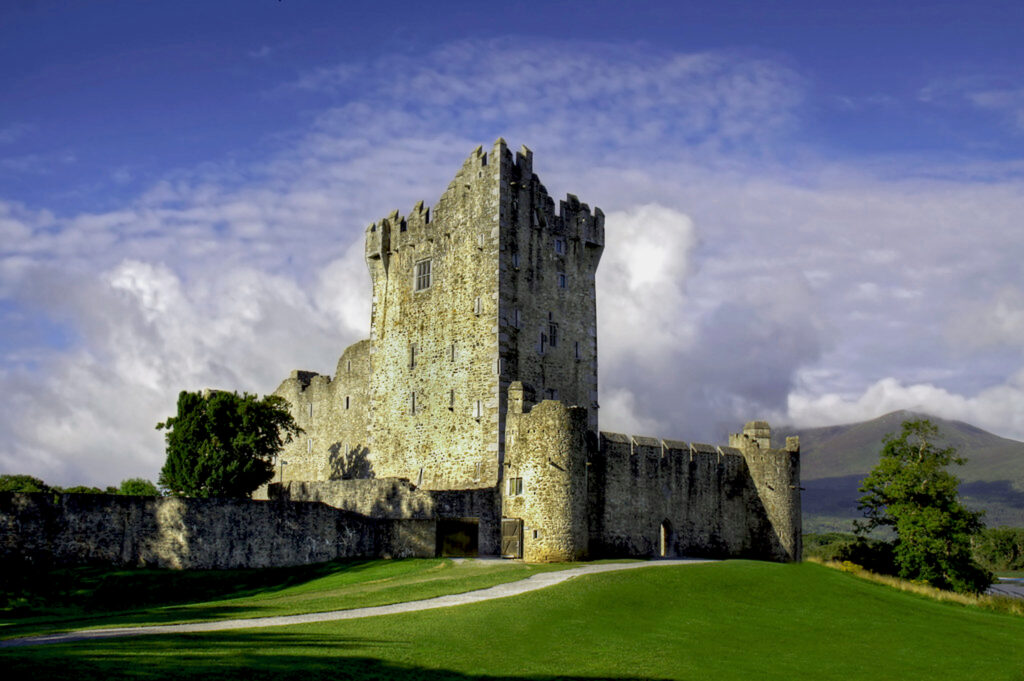Exploring Doonagore Castle
Exploring Doonagore Castle: History, Views, and Visitor Tips
Doonagore Castle indeed stands as a captivating historical gem nestled along the rugged west coast of Ireland, near the picturesque village of Doolin in County Clare. It’s a well-preserved example of a 16th-century tower house, with its distinctive round tower and defensive walls. Dating back to the 16th century, this well-preserved tower house boasts a striking round tower and formidable defensive walls, offering a glimpse into Ireland’s rich architectural heritage. Although off-limits to the public (the castle has been converted into a private holiday home), Doonagore Castle is well worth seeing from the outside: its round tower and defensive enclosure are truly charming! While the castle itself may be inaccessible to the public, its exterior still enchants visitors with its imposing presence and timeless charm. The rugged beauty of the surrounding landscape, combined with the castle’s medieval allure, creates a scene straight out of a fairytale, captivating the imagination of all who behold it.
History of Doonagore Castle
The existence of an earlier castle preceding Doonagore Castle adds another layer to its already rich history. Before Doonagore Castle existed. there was already a first castle, built in the 13th century. While historical records primarily attribute the current structure, Doonagore Castle, to the 16th century, the knowledge of its earlier counterpart provides valuable insights into the evolution of architectural styles and defensive strategies over the centuries.
The present castle dates back only to the 16th century and was commissioned by Turlough O’Brien of Ennistymon in 1582, historians typically prioritize documented evidence to construct a more accurate and reliable narrative of its history. who wished to have a castle on the Irish coast, to better monitor the comings and goings of ships on the Atlantic. While exploring local legends and folklore is always fascinating, historians generally rely on documented evidence to reconstruct the history of sites like Doonagore Castle.
The Armada was indeed a formidable fleet sent by King Philip II of Spain in 1588 to invade England and overthrow Queen Elizabeth I. However, despite its size and strength, the Spanish Armada faced numerous challenges that ultimately led to its failure.
English ships were smaller and more maneuverable, allowing them to engage the larger Spanish vessels in hit-and-run attacks, inflicting damage while minimizing their losses. The Spanish Armada’s attempted invasion of England in 1588 ended in failure, and many of its ships were scattered or wrecked along the coasts of Ireland and elsewhere. In 1588, Spain attempted to invade England… in vain… While Spain was in full retreat, a Spanish ship from the Invisible Armada was wrecked on the Irish coast, not far from the castle. It’s entirely plausible that one of these ships could have been wrecked near Doonagore Castle or in the vicinity of County Clare. Such events would have left their mark on local history and folklore, adding to the rich tapestry of stories associated with places like Doonagore Castle.
The historical events surrounding the Spanish Armada and its impact on Ireland are indeed complex and often shrouded in legend and folklore. While it’s true that some survivors of the Armada were taken prisoner by local authorities in Ireland, More than 170 survivors were then taken prisoner by the High Sheriff of County Clare, Boetius MacClancy, who ordered them hanged at Doonagore Castle… Their bodies were then buried. However, without concrete archaeological evidence or reliable historical documentation, it’s challenging to confirm such claims definitively.
Restoration efforts indeed have been instrumental in preserving historical landmarks like Doonagore Castle. Restoration efforts, particularly in the 19th and 20th centuries, have played a crucial role in preserving historical landmarks like Doonagore Castle. Throughout history, Doonagore Castle was restored in the early 19th century and 1970, by architect Rex MacGovern, for a private American buyer, Mr. O’Gorman, who acquired the castle… The O’Gorman family still owns the castle today, The O’Gorman family continues to own and utilize the castle as a holiday home, and as a private residence, and use it as a holiday home… (It is therefore not open to the public).
Visit Doonagore Castle
Although visiting the castle’s halls and other interior rooms is forbidden, it is possible to admire the castle from the outside…Perched atop a small hill overlooking the water, Doonagore Castle features a main tower surrounded by a small defensive wall. the defensive wall protecting the castle’s main tower.
Doonagore Castle is often referred to as “the fort of the rounded hills” or “the fort of the goats”, due to its geographical location These names reflect its geographical setting, nestled among rolling hills, and the presence of goats in the surrounding area, which further enriches the castle’s rural ambiance. the large number of goats in the area…
Shipwreck and Murder
The events surrounding the Spanish Armada shipwreck near Doonagore Castle indeed take a dark turn with the arrival of the High Sheriff of Clare. In 1588, a ship from the Spanish Armada got into difficulty off the coast of Doolin and crashed close to the castle.
In 1588, when a Spanish Armada ship foundered off the coast of Doolin near Doonagore Castle, approximately 170 survivors managed to escape the wreck. Sounds like a happy ending, right? Yeah, well, all was going to plan until the High Sheriff of Clare arrived.
All of the survivors are believed to have been hung at the castle or a site nearby that’s known as The executions are believed to have taken place either at Doonagore Castle itself or at a nearby location known as “Cnocán a Crochaire,” which translates to Hangmen.
Post-1641 Rebellion
The history of Doonagore Castle reflects the turbulent times of Irish history, including the aftermath of the Irish Rebellion of 1641 and the subsequent Cromwellian settlement.
Following the Irish Rebellion of 1641, which saw widespread unrest and rebellion against English rule in Ireland, Doonagore Castle was granted to John Sarsfield as part of the Cromwellian settlement. It included several penalties (death and the forfeit of land) against those who had taken part in the Rebellion of 1641.
In the 18th century, Doonagore Castle came into the possession of the Gore family. By this time, the castle had fallen into disrepair, but the Gores undertook efforts to restore and repair much of the structure. The castle had fallen into disrepair at this point and the Gores went about repairing much of it.
In 1588, a ship from the Spanish Armada sank near the coast at Doolin. Survivors from these ships sought refuge on land, hoping to find shelter and assistance. However, the fate awaiting them at Doolin Castle, also known as Doonagore Castle, was far from welcoming. Instead of room and board, they were hung. More on this below.
Doonagore Castle
Address:
follow the 2J56+FG, Doonnagore, Doolin, Co. Clare, Ireland
By Author Raihan From NR EMEARALD DIARY
Published: August – Last updated: August 02, 2024

Ross Castle Travel Guide: History, Attractions, and Sightseeing Tips
Ross Castle perches in an inlet of Lough Leane. The Irish chieftain O’Donoghue Mór likely built it in the fifteenth century. The castle served not only as a stronghold for its inhabitants but also as a symbol of power and authority in the region.

Adare Castle Guide: History, Attractions, and Visitor Tips
Adare Castle stands as a testament to the strategic importance of fortified structures in medieval Ireland. Adare Castle epitomizes the medieval fortified castle in Ireland. Situated strategically along the banks of the River Maigue,

Ross Castle Travel Guide: History, Attractions, and Sightseeing Tips
Ross Castle perches in an inlet of Lough Leane. The Irish chieftain O’Donoghue Mór likely built it in the fifteenth century. The castle served not only as a stronghold for its inhabitants but also as a symbol of power and authority in the region.

Adare Castle Guide: History, Attractions, and Visitor Tips
Adare Castle stands as a testament to the strategic importance of fortified structures in medieval Ireland. Adare Castle epitomizes the medieval fortified castle in Ireland. Situated strategically along the banks of the River Maigue,

